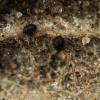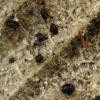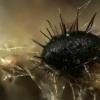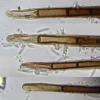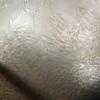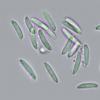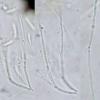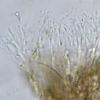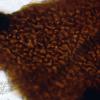
15-12-2025 07:09
 Danny Newman
Danny Newman
indet. Rutstroemiaceae sp. on unk. fallen leavesMc

18-12-2025 21:17
Pol DebaenstThe identification took me to Byssonectria deformi

19-12-2025 10:10
Patrice TANCHAUDBonjour, récolte réalisée en milieu dunaire, a

18-12-2025 17:23
 Bruno Coué
Bruno Coué
Bonjour,je serais heureux d'avoir votre avis sur c

18-12-2025 18:07
Margot en Geert VullingsThese plumes were found on rotten wood.They strong

17-12-2025 18:35
 Michel Hairaud
Michel Hairaud
Bonjour à tous/Hi to everyone I am passing along

15-12-2025 15:48
 Danny Newman
Danny Newman
Melanospora cf. lagenaria on old, rotting, fallen

15-12-2025 15:54
 Johan Boonefaes
Johan Boonefaes
Unknown anamorph found on the ground in coastal sa

15-12-2025 21:11
 Hardware Tony
Hardware Tony
Small clavate hairs, negative croziers and IKI bb
 Hi together,
Hi together,Maybe someone has an idea about this one. It's a setose coelomycete that grew on the lower Surface of dead leaves of Rosa rugosa, directly at the coast of Northern Germany, found by Torsten Richter. In the vicinity, Breviappendix rosae could be found, but on differernt leaves. I'm not sure whether there could be a connection between these two.
Some data:
Conidiomata up to 430 µm accross
Setae: 90 - 180 × 6 - 8.3 µm
Conidia:
(7.5) 8.1 - 9.8 (10.3) × (1.8) 1.82 - 2.2 (2.3) µm
Q = (3.6) 4.3 - 5.1 (5.4) ; N = 20
Me = 9.1 × 2.0 µm ; Qe = 4.6
There do not seem to be any appendages on the conidia. Further, I could not observe conidiogenous cells or the conidiogenesis, what surely does not faciliate determination, but I even don't have any idea so far. If neccessary, I could try to get more details. Any hints are welcome.
Thanks in advance,
Matthias
very interesting.
You can compare with Dinemasporium asetulum.
But this species is report from africa.
best regards,
Thorben
Compare with Chaetomella oblonga.
This species is described on leaves of Rosa and the micro features fits well.
But conidiogenous cells are present.

vielen Dank, das passt perfekt.
Ich hab nochmal am Exsikkat nachuntersucht, Konidienträger gibt es natürlich, dazu war das erste Präparat nur nicht gut genug. Jetzt hab ich sie gefunden, auch die passen für deinen Vorschlag.
Anbei noch ein paar Bilder.
Viele Grüße
Matthias

